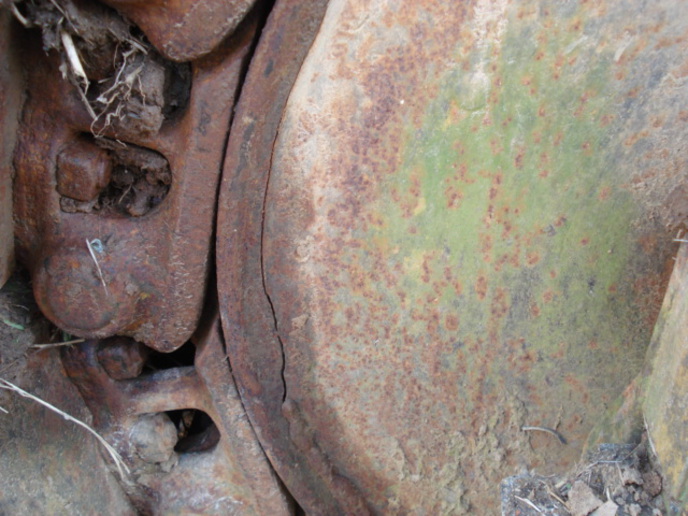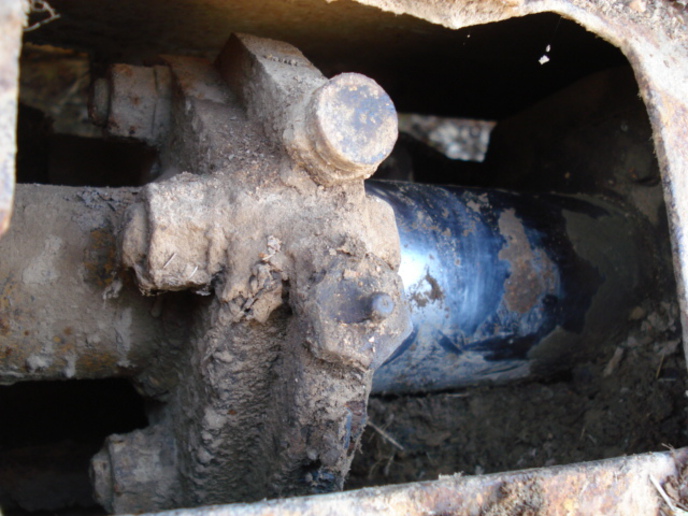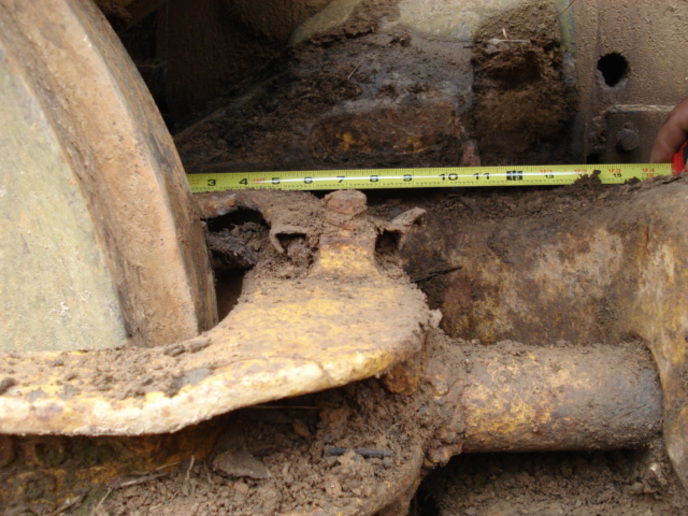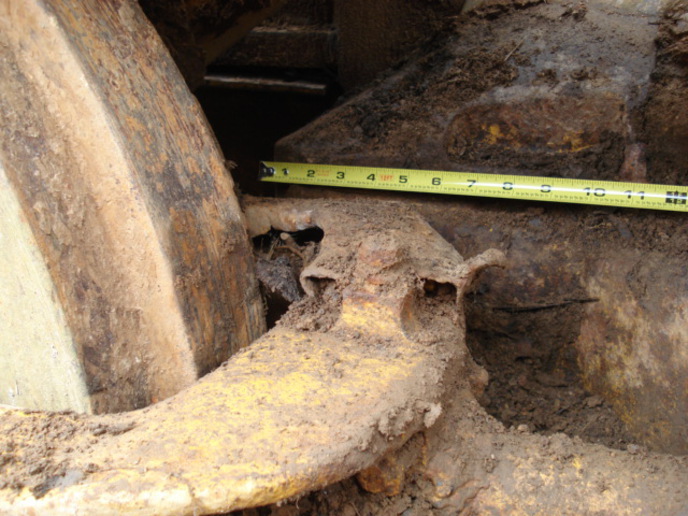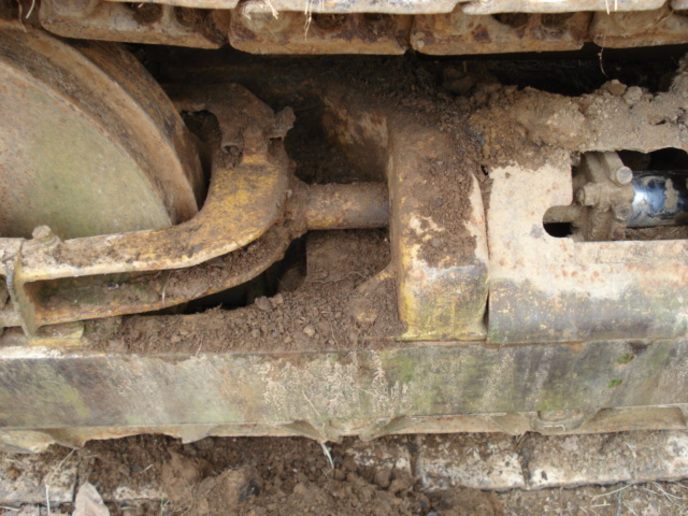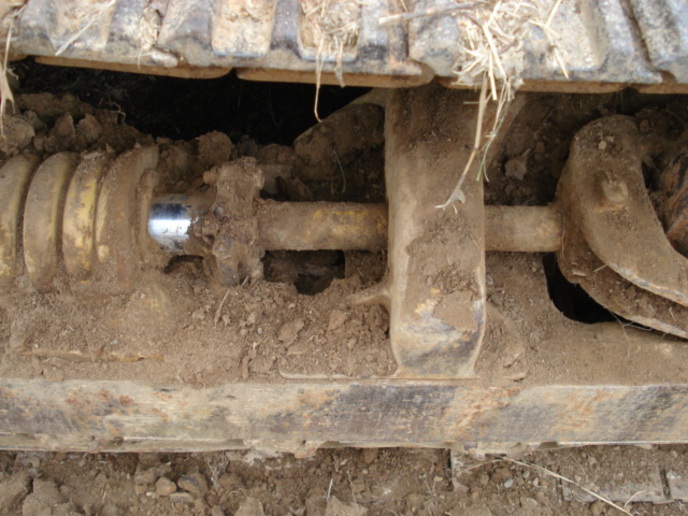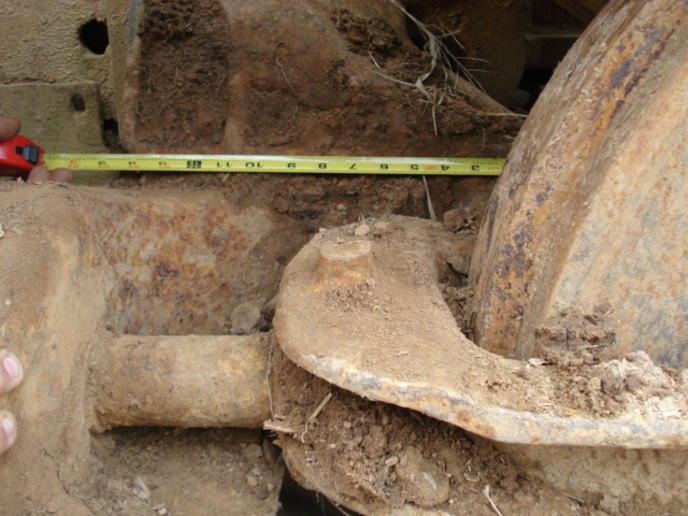Check the opposite side of the pins/bushings, if that's an unworn or unused side, you can break the track down by separating at the master link, take the tracks to a shop that does track work and have the pins and bushings turned to the good side, this used to be common, gaining significant service life. I'm drawing a blank about installing new pins and bushings with something like this, I think its possible, the rails look good, the only reason I say that is they don't look even close to hitting the bottom roller flanges, you would see a flat spot on the pin boss. You can measure the rail, (track link) height and compare to what new is. Eyeballing from photos is not accurate by any means.
Often times a tractor like this, the above will get ignored and it gets run further, accelerating wear, but this is a good or a seemingly good example of where you have good sprockets, track links, (rails) appear to be ok, within tolerance or possibly little wear, (you must measure to be sure) whereas a pin/bushing turn, new pins bushings if can be done, will restore the correct pitch, get the pin/bushings to ride back into the root of the sprocket and not further up the teeth which accelerates wear of the sprocket.
That idler should be able to be welded in place and not be a problem.
That chrome cylinder,(yes, clean like you would a hydraulic cylinder before retracting) meaning this is a later grease type adjuster, has only so much travel to accommodate pin/bushing wear, to maintain correct tension, you can't have loose tracks, or they will come off in a turn, you can't have tight tracks, it will accelerate wear on all components, so the adjuster is there to maintain correct tension until such time its all the way out and you need to build up rails, turn the pins and bushings or replace the track chain, sometimes there are options as stated above to gain back adjustment, just by doing a pin and bushing turn. Nowadays its not a common practice, but not eradicated, in this case it may be feasible, added expense to the cost of owning the tractor, but if you have good sprockets, bottom rollers, idler and carrier rollers, ( 1 each side under top of track chain ) and all it needs is a pin bushing turn, once done, no other mechanical problems, you will have gained many hours back on those tracks. As I recall with small grading tractors, D3, D4 size machines we used often, you would get approximately 1000 hours, + or- before it was time for a pin/bushing turn or some kind of undercarriage work. Its also dependent on the operators habits, soil conditions etc. An aggressive and abusive operator will lessen the interval, a careful operator will extend it. Harsh turns, working in reverse excessively, and even sandy/abrasive soils will increase and accelerate wear. Crawler loaders, per say when loading trucks from a pile or bank, nice easy "K" turns for example, vs harsh and sharp turning, spinning on the track pads is the difference between an abusive operator or one that is careful, spent a lot of hours on later models of these, always set up where I could make gentle turns, in a "K" pattern or close to that. With that in mind, for a farm, part time use or even light contracting, a tractor like the above has the potential to be very useful for a long time, if all the other things check out. Negotiate the price as best you can, do the things it needs, it has the "POTENTIAL" to be a decent buy and you would break even or possibly make a few bucks on resale if you take care of it, one of these in decent shape will bring more. Breaking the track may be hard work, but once done, it could be well worth doing, vs buying a tractor that has an undercarriage so worn its close to destruction, whereas you need to take a link out, cut the roller flanges off so they don't hit the pin bosses, which is a bumpy ride. If this tractor, even if running good, no mechanical problems, but a wore out undercarriage, is worth scrap and thats it. Find one with a nice undercarriage, only needing other work, no major problems, final drives, drivetrain etc. even say it needed engine or engine overhaul work, its still often times a decent buy if you know how to repair the other items, or it will get parted and those nice tracks will end up on another tractor. I'd rather do an engine job, than a complete undercarriage. The latter will be worth more than the tractor or is most times. Some people buy older ones like these, and rebuild them, regardless, because they know what they have in the end. Person I buy greehouse plants from in the spring did this with a D6 9U, more into it than its worth, well maybe he will break even, but its a nice solid tractor, ready to use anytime, in very nice condition.
It used to be common to build up the rails, and other parts, to gain back adjustment, so if even if the rails were worn, but you can turn pins and bushings to new side, while that track is laid out flat, you build up the rails, its possible to get most if not all the adjustment back.
Reason I stated all this is, you have to measure all the components, make an assessment of the overall condition and see what options you have, if its just pins/bushings, and rail height, the rest within tolerance, you could without high expense make that tractor into a nice useful machine, not worrying about tossing a track or having undercarriage problems. Always seems to happen in the mud or in a turn on as slope.
Attached link is the only website I know of that will explain the undercarriage components, how to measure etc. For some reason the photos have been taken down, but the descriptions are still there.
Look at the bottom of the page, there are small images you can click on and a .pdf file with a descriptive undercarriage basics by IH, not caterpillar but most is the same or similar, until you get into newer track chains, adjusters etc. This 955 may just have regular dry pins, bushings, not sealed, lubricated, (S.A.L.T) type track chain. There are many pages to look at, read up here, it will shed some light on the subject, being you are new to these, this should help immensely, looks like a lot, but its simple to understand, same principle as any chain driven component, just bigger, and they run in the dirt is all LOL !
Undercarriage Basics